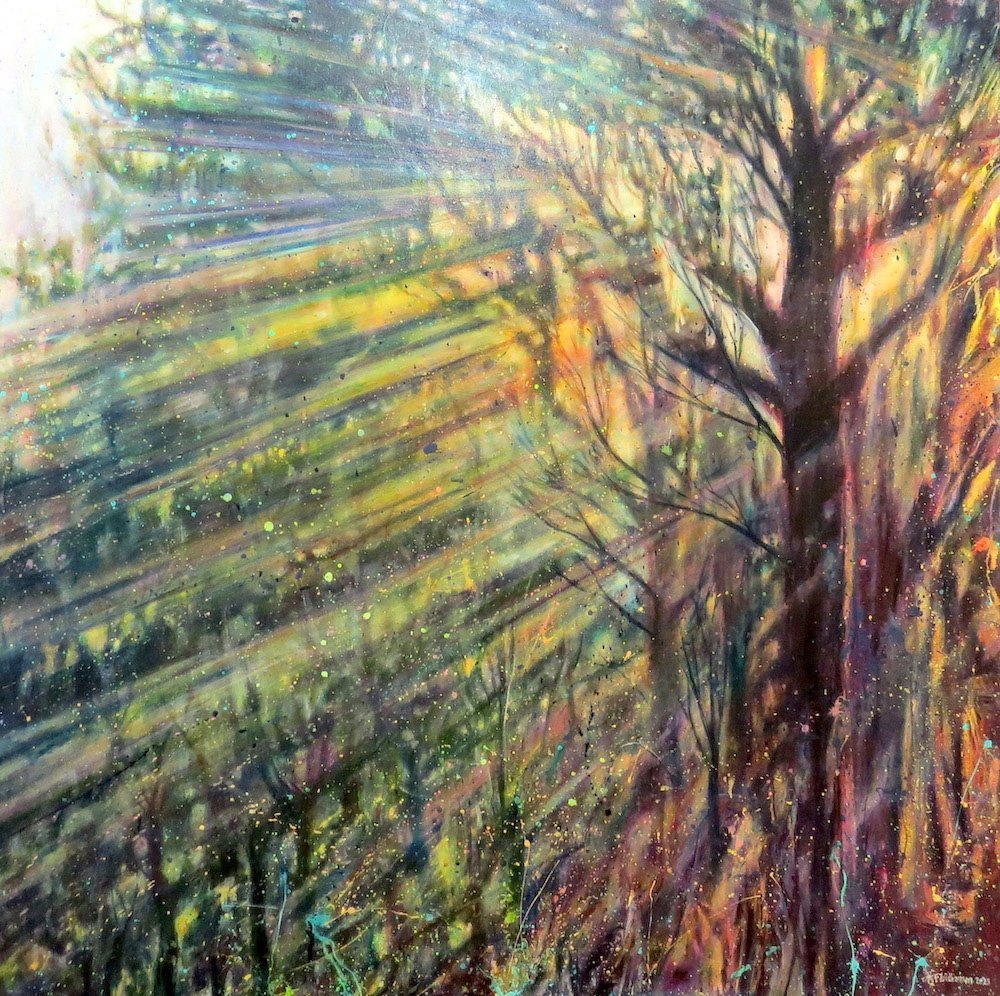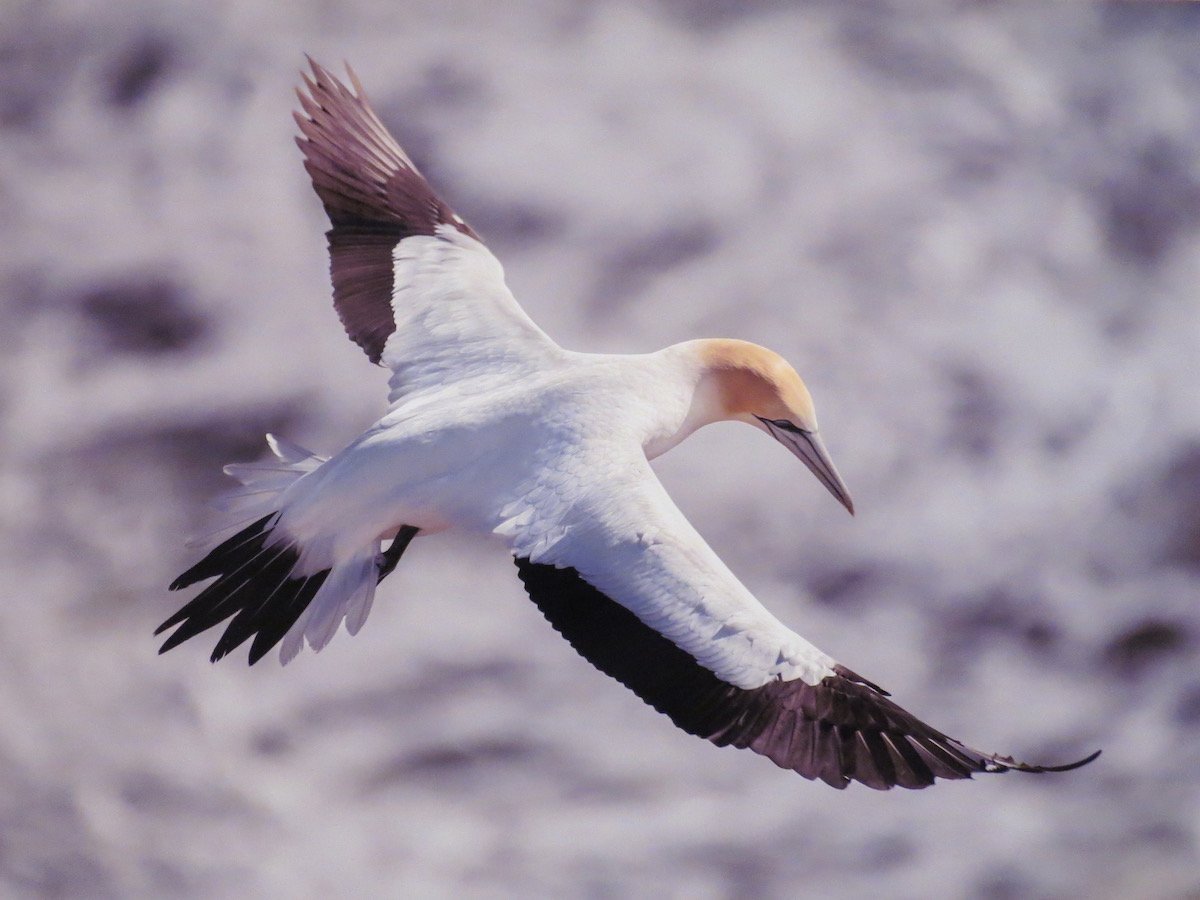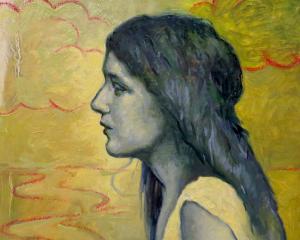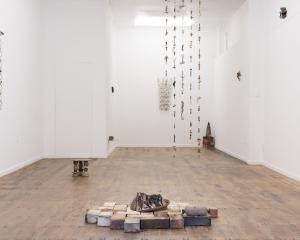
(Brett McDowell Gallery)
Joe L’Estrange’s latest exhibition at Brett McDowell Gallery is a fine mix of her detailed garden paintings and urban images from around Dunedin.
The urban images could almost be described as reportage — many of the paintings show the changing skyline of the city, focusing as they do on the recent changes to the Hillside Workshops and other construction and destruction around Dunedin. L’Estrange is revelling in the formerly hidden aspects of the city which have been revealed in a new light by this "progress". In Empty Work Site, for example, the city’s Central Fire Station is shown in a view until recently unavailable to locals. The artist’s unwavering eye pinpoints the features lost at Hillside, in Rattray St, and at the former Carisbrook and Cadbury’s sites.
L’Estrange brings the same eye for detail to her complex botanical images. The titular Garden Chaos of one work is a structured disarray, each leaf and bloom having its specific place against the artist’s trademark black backgrounds. In several of these works, L’Estrange reveals a major influence on her art, Japanese master Ogata Kōrin. With Irises, L’Estrange presents a clear variation on a Kōrin’s similarly titled work from 1700, and with Daffodils, she creates a fine western partner-piece to it.

(Moray Gallery)
For the past several years, painter Kate Williamson has made her home in Waipori Falls, and has become captivated by the wildlife and light which pervades the surrounding forest. These verdant depths have become the subject of her latest exhibition at Moray Gallery.
Williamson’s art is an intriguing combination of realism and gestural action painting. Her images display the life and greenery of the bush as basic structural elements, over which she has created dynamic effects through what she describes as "the urge to fling paint".
This spontaneity has added intriguing life to the works. This is particularly the case in Waipori, a piece on loose, unstretched canvas, where the solid form of a dead waterlogged tree is alone against shifting clouds of light and colour which perfectly capture the motion of a forest stream. In other works, such as Epiphytical Entities and Forest Nimbus, the effect of the artist’s practice has been to create the glow of light within the works. In the latter of these paintings, slanting rays between the trees almost take on the form of flame. In the exhibition’s smallest work, Luminous, form has been reduced so as to focus attention on the pattern of colour alone. The result is a haunting meditation on the interplay of light and reflections.

(Tūhura Otago Museum)
Tūhura Otago Museum is celebrating the 24th year of its annual photography competition. The accompanying exhibition showcases some of the top entries from the 3000 entries by photographers from both within Otago and around the country.
The competition consists of four distinct nature-related categories — Wildlife, Botanical, Landscape, and Humans in Nature — in each of which there is both an adult and a youth award. The displayed works show great ability on the part of the photographers, who have produced numerous excellent images.
Unfortunately, the museum has been hamstrung in its ability to showcase this year’s works, owing to the ongoing renovation of its special exhibitions gallery. This has made for a smaller display than usual and the less-than-ideal method of projecting the winning entries on to the gallery’s walls.
Despite this, there are many heartwarming and breathtaking images exhibited, from Carey Knox’s smile-inducing winning Wildlife entry, of a spider hitching a ride on a lizard’s head, to Eugene Yeo’s vertiginous view of crevasse rescue training and Martin Barwood’s action image of fighting tūi.
The competition’s overall winner was first-time entrant Benny Chia, with a well-composed and richly coloured image of Kepler Track fungi. Runner-up was Sarah Manketow’s image of a swimmer depicted amidst moody Fiordland lighting.








![Rozana Lee, "Drawn to see(a)" [Installation view]. Photo: Beth Garey](https://www.odt.co.nz/sites/default/files/styles/odt_landscape_small_related_stories/public/story/2024/10/blue_oyster_r_lee.jpg?itok=IGhlKMSl)



![Phaeacia (2024), by Paul McLachlan [detail]. Acrylic and rust on canvas.](https://www.odt.co.nz/sites/default/files/styles/odt_landscape_small_related_stories/public/story/2024/09/paul_mclachlan_phaeacia_de.jpg?itok=UuQsvnQc)